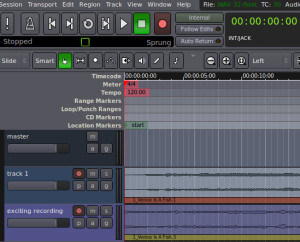For hundreds of years, the Catholic church used Gregorian Chant. Until the second Vatican Council in the latter half of the 20th century, and then they stopped. But in the mean time, every mass-going Catholic heard chant every week. A medieval form of music was thus influencing Catholic composers for hundreds of years, long after chant had been in the early modern charts. Even if the composers weren’t interested in it or didn’t even particularly like it that much, it was still something they had known from early childhood, that could not help but burrow into their unconscious. Refreshed, week and week.
Which is why I felt so horrified on giving a brief listen to Attention K Mart Shoppers. My upbringing was thoroughly suburban – a consumer culture made up of gigantic retail outlets surrounded by even more gigantic parking lots. My stay-at-home mother, quite reasonably, took my brother and I along for shopping trips. Sometimes we followed her and the grocery cart around, whining endlessly for whatever sugar-coated precursor to the obesity epidemic had been advertised on TV that week. In some larger/ more varied stores, such as Gemco, she would allow us to wander around in the sports and camping section. (Thus sparking my profound fascination with camping gadgets and inflatable rafts. (My plan to save up enough of my allowance to buy my own raft never came to fruition.))
We spent an hour in church every week, listening to the newer liturgical music, required by canon law not to be overly distracting (read: interesting/good). I don’t know how many hours a week we spent in shopping establishments, but, especially during my teen years, I suspect it was a lot more time. Which means I heard at least as much elevator music as a Catholic composer a century earlier would have heard chant.
The songs on Attention K Mart Shoppers aren’t bad, per se. The people who worked on them were clearly skilled. Taken individually, the music isn’t even bland. Their formal constructions are so intuitively familiar – the timbres, the rhythms, the note choices. When I was in my teens and twenties, I had a recurring dream where I was flying/floating in a shopping mall, with an especially grand layout, escalators criss crossing over the atriums. And then, in my adulthood, I went to Valley Fair mall in the South San Francisco Bay Area. It was incredibly eerie. Here was the mall I had been dreaming about. My family had been local to it in my early childhood, but had moved away when I was 7 or 8. I had forgotten it, except not. It was still rooted in my subconscious, impossible to shake away completely. How much deeper-rooted is the music, which would have been heard across multiple locations?
Indeed, what I heard most immediately on listening to this sound track of my childhood, was not eerie nostalgia but the echos that are in my own composition. When I’m writing something that’s melodic, my tool kit of notes, timbres and rhythms is build off a foundation of elevator music. This is the well-spring of my creativity. I don’t just make noise. I make the noise of late 20th century capitalism. I can leave American suburbia, but American suburbia will never leave me.
The Les Said the Better music section is home of many fine varieties of noise music. From analogue to digital to acoustic, there’s something in it for you. Head over to the shop now for Valentines Day noise, great for a friend or a partner. With every day low prices and a wide selection, when you think of noise commissions, think of celesteh.etsy.com.


